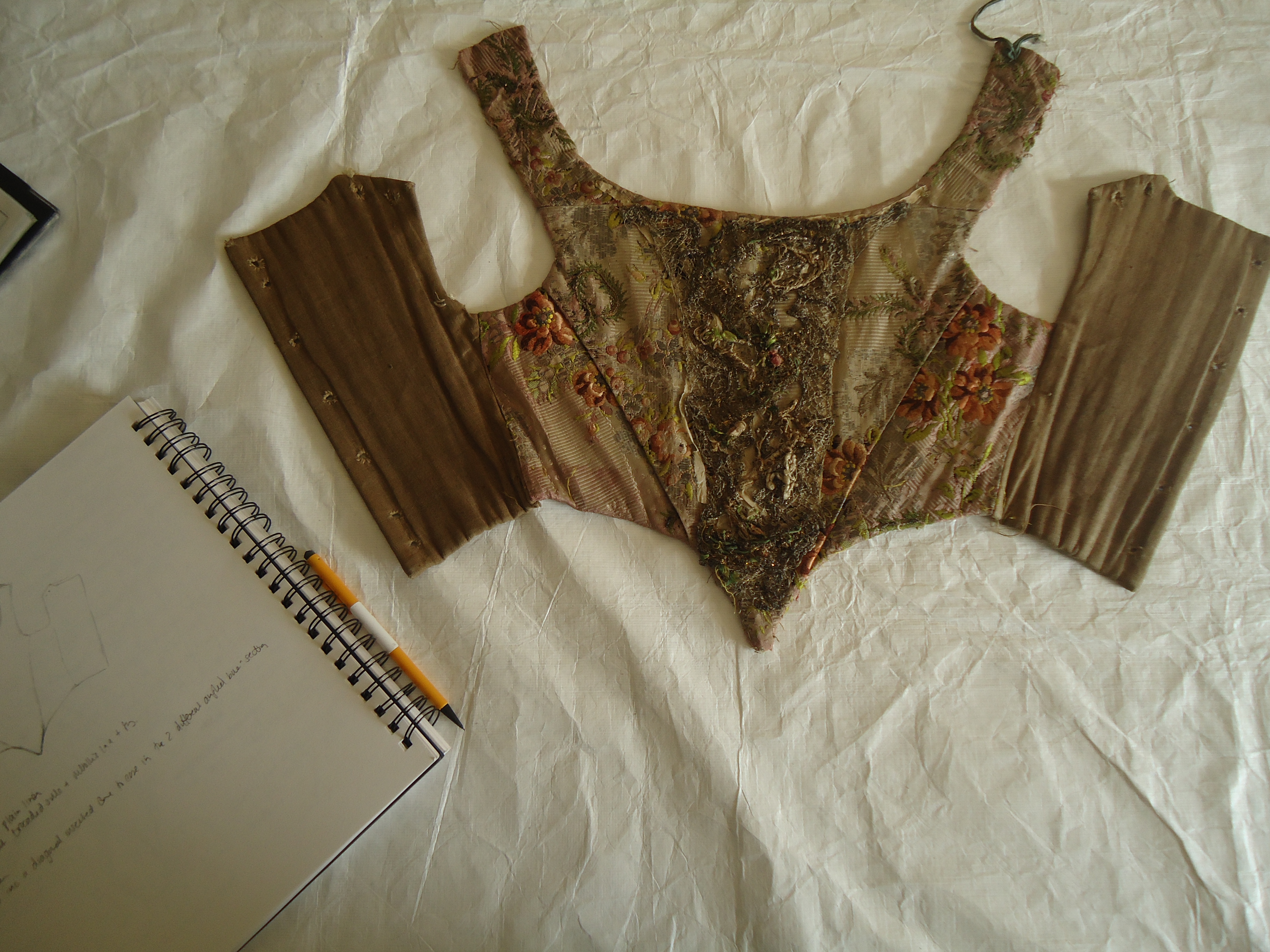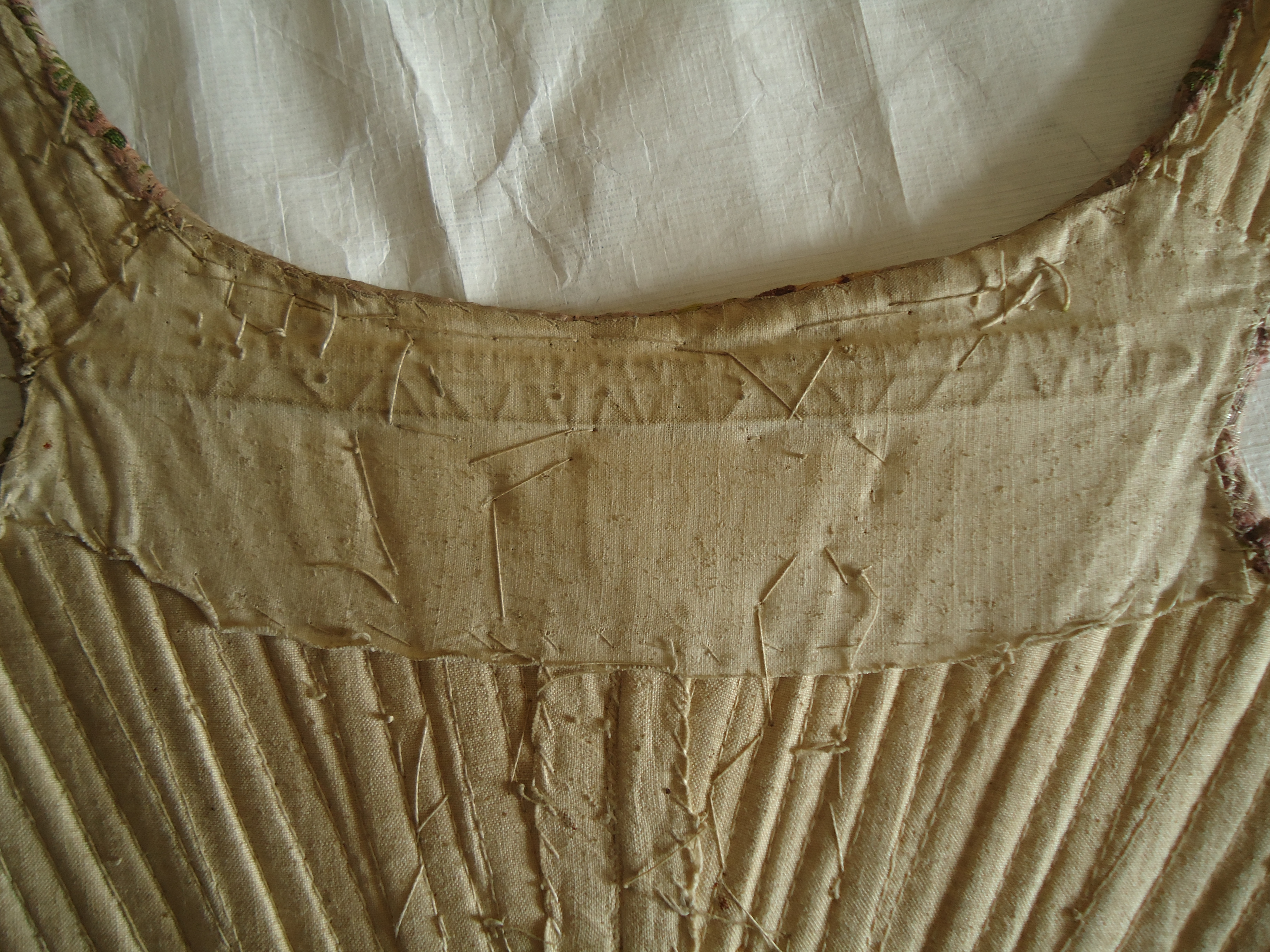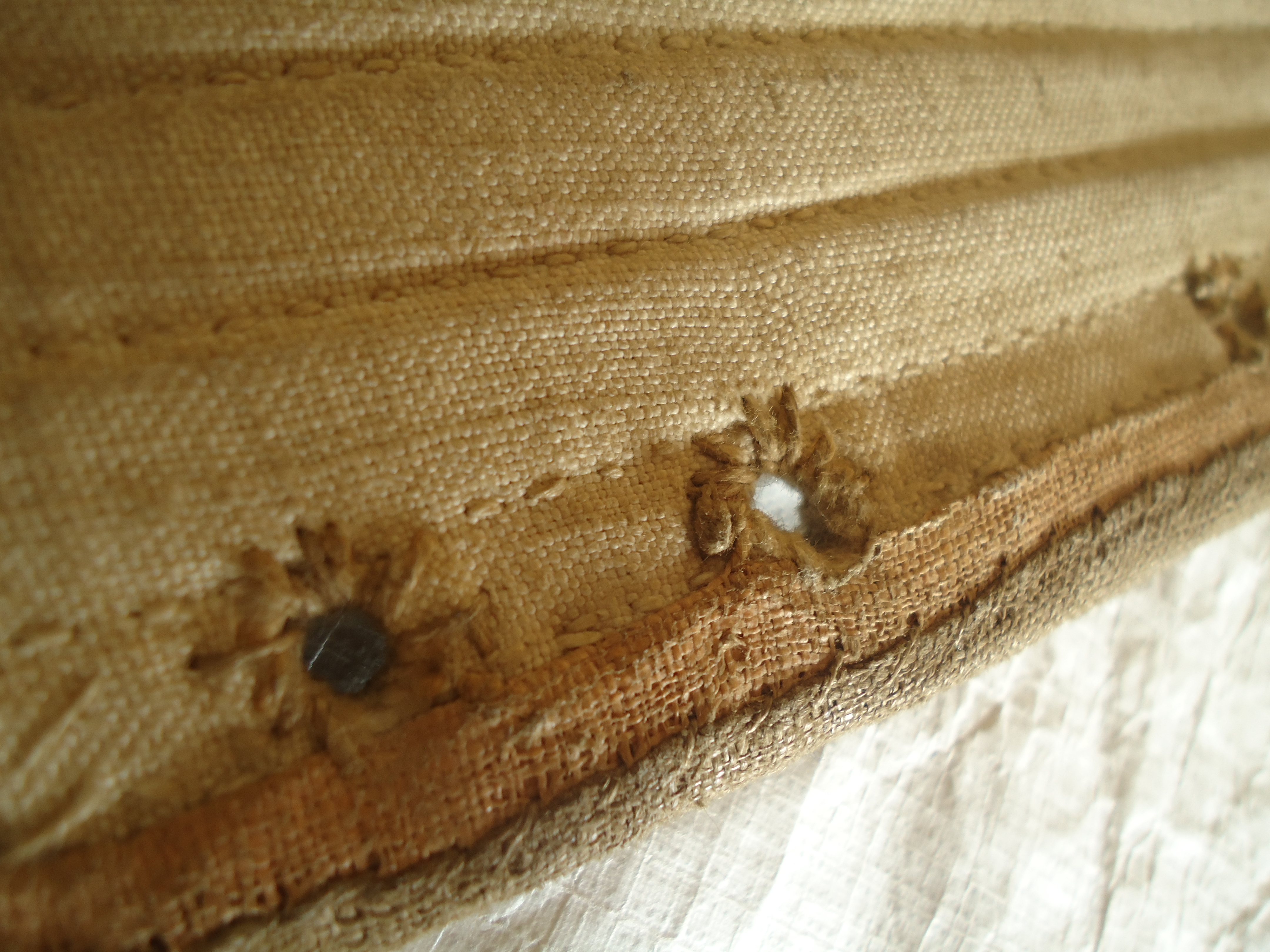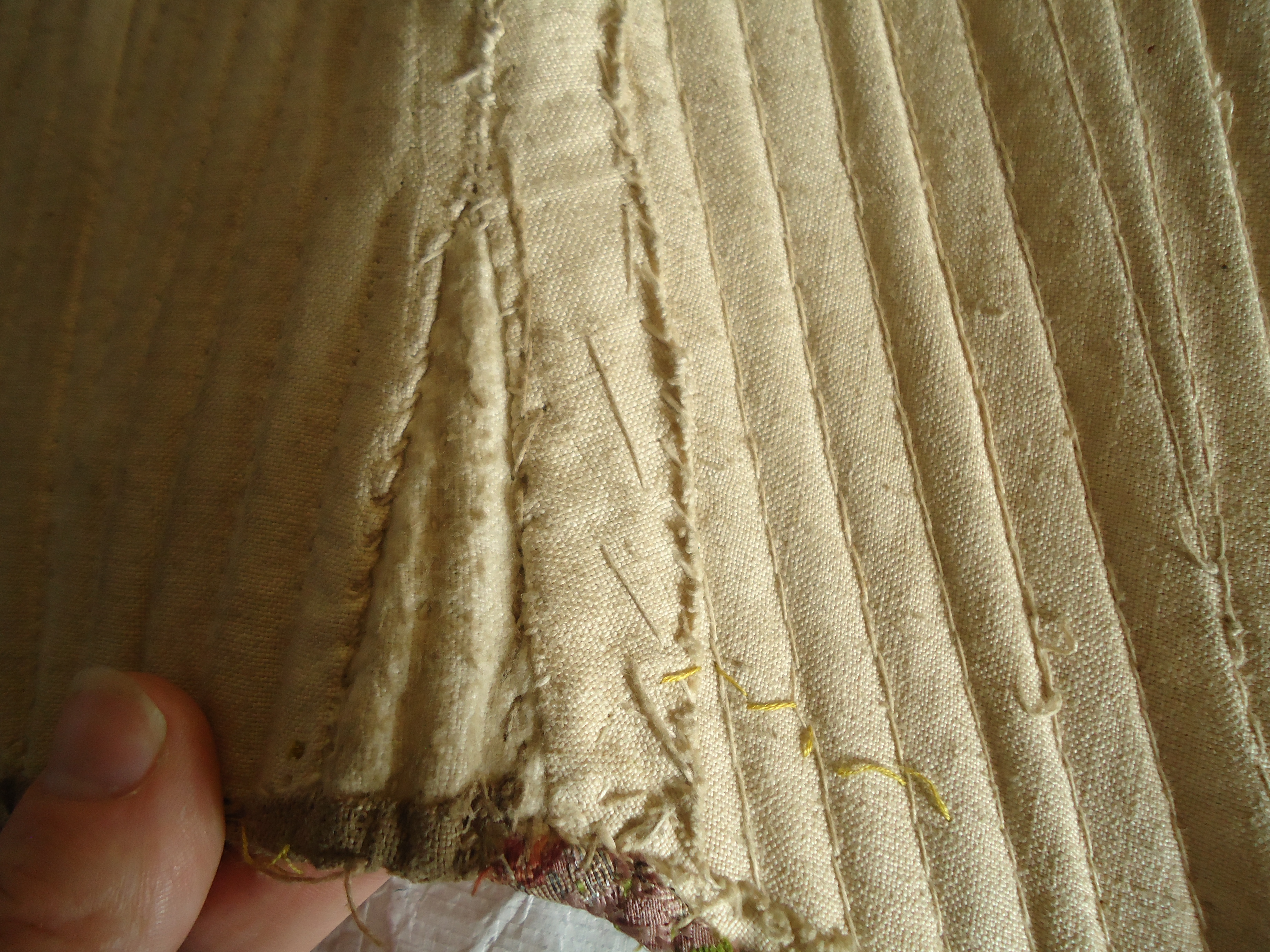Garment Studies:
Covered Stays or Boned Bodice!
Sno.1294
Details:
– Well for a start this pair of stays are unlined – which is really useful for us!
– Also we think they are probably made for a younger girl as the body and Scye are quite short and petite.
– The notes from the museum say it is French silk from the 1760’s so they atleast weren’t covered until this point in time.
– Not a long CF point and not a deep one by the time sides wrap round.
– 7 x Eyelets.
– Bones are wide and deep – chunky would be the word!
– Eyelets on CB shoulder for the strap to be laced to.
– CF depth = 11 1/4″
Bust from Side Seam (ss) to SS on front = 11 1/2″
Top of shoulder strap to point = 18 1/4″
From top of CF SS (at scye) to point = 8″
Back length = 10 1/2″
Back hem = 4 1/8″
Back SS length = 5 1/2″
In this above image you can see quite a few things.
For example:
– The stitching that holds down the SA (seam allowance) is much messier than we’ve seen in other stays.
– You can also see the massive size of the whalebone…
– The inner linen strip for the top curve bone that has been removed…
– and the felling down of the Silk onto the back.
Here is a closer image of the stitching on the back. You can see the dead-tight centre stitching that binds the two panels together (this is the CF seam by the way) and you can also see the other whip stitch that holds the seam allowance down. We’d imagine that the long, wild stitches that randomly dart across this image are from holding the CF lace and trim on.
In this above image you can see clearly the extra strip sewn on along the CF top edge. This encases the bones that support the bust section of the stays. Normally these bones have been heat-treated into shape and create a fantastic curve. Storing Stays flat, however, will make them become flat as it is but natural fibres – just as storing a well-tailored gentleman’s jacket with pad stitched lapels and steam curved fronts will flatten if mis-hung. Here you can see two bones running side by side and as flat as a rular.
These eyelets have been sewn with a basic whip stitch with some chunky looking thread – not a button hole stitch and nor have they been sewn over a metal disc as some people think might happen. They are nice and round though. Also, it’s an interesting shot of the two layers of the other fabrics being sewn down quite neatly but not very far into the panel – literally just lapping over the edge.
Here at HandBound we sometimes feel at the beginning of our learning, like there’s a whole massive mountain range still to cross and we’ve barely done a foothill. It’s bits like this in particular that emphasize this hole in our knowledge. If we’re honest, this pair of stays doesn’t really fit our understanding of the 60’s to 80’s fashion at all. It’s heavily guilt laced which has begun to go out of fashion, it is of a dark colour, which too has lost fashionable favour. It is covered with silk and expensive lace so not a cheap item. It has thick bones rather than the general trend for this period of thinning down in size. Court wear was still mainly sacks at this point in time and still with the wide hooped petticoats so a heavily laced stomacher does tie in with that -yippee! But it seems so cheaply made! The stitching between the boning is quite big and chunky.
This looks like an alteration – it’s been put in the SS just to give a bit more shape at the waist. The silk covering and the linen for the back join at this very point so it’s hard to say whether it was done before or after the covering. Who knows, it could’ve been passed down to a relative for some function from an elderly aunt who wore it in her court days – let out a little and the mother patting the young girl on the shoulder and saying ‘nevermind dear, no one will notice – you look beautiful in it!’ while she stands sulking in front of a looking glass.









